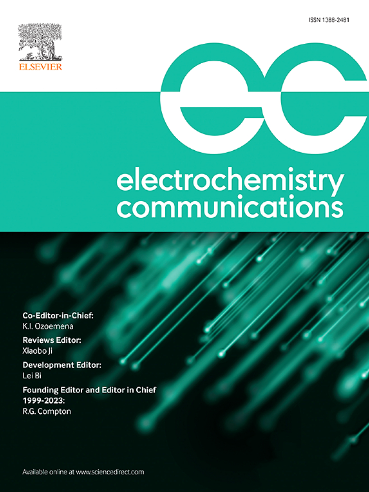Electrochemical performance and behavior of nickel pig Iron anodic electrolysis for enhanced sulfuric acid leaching
IF 4.2
3区 工程技术
Q2 ELECTROCHEMISTRY
引用次数: 0
Abstract
This study presents an innovative electrochemical method for producing ultra-fine Nickel Pig Iron (NPI) powders through anodically induced overpotential electrolysis, achieving a significantly high surface area and exceptional sulfuric acid leaching efficiency. Nickel, a critical material for energy applications, faces increasing supply constraints, leading to greater reliance on intermediates like nickel sulfate. Conventional high-pressure acid leaching (HPAL) processes, while effective, suffer from high operational costs and excessive acid waste generation. To address these challenges, this study employs anodic oxidation of NPI under high-voltage conditions (≥10 V), facilitating particle refinement and enhanced electrochemical reactivity. Electrochemical characterizations, including cyclic voltammetry, chronoamperometry, and Pourbaix diagram analysis, confirm the formation of oxidized Ni-rich phases at optimal voltage ranges with peak current exceeding 10 A. The resulting fine NPI powders exhibit a leaching efficiency surpassing 95 % in 2 mol/L sulfuric acid at ambient temperature and pressure, demonstrating their potential as a cost-effective alternative to HPAL. Further post-process evaluations reveal critical electrolysis parameters influencing oxidation behavior and leaching performance, providing key insights for optimizing nickel extraction via anodic electrolysis.
镍生铁阳极电解强化硫酸浸出的电化学性能及行为
本研究提出了一种创新的电化学方法,通过阳极诱导过电位电解生产超细镍生铁(NPI)粉末,实现了显着的高表面积和优异的硫酸浸出效率。作为能源应用的关键材料,镍面临越来越多的供应限制,导致对硫酸镍等中间体的依赖加大。传统的高压酸浸(HPAL)工艺虽然有效,但存在操作成本高和产生过多酸废物的问题。为了解决这些挑战,本研究在高压条件下(≥10 V)对NPI进行了阳极氧化,促进了颗粒的细化和电化学反应性的增强。电化学表征,包括循环伏安法、计时安培法和Pourbaix图分析,证实了在峰值电流超过10 A的最佳电压范围内氧化富镍相的形成。在常温和常压下,NPI粉末在2 mol/L硫酸中的浸出率超过95%,显示出其作为HPAL替代品的经济效益潜力。进一步的后处理评估揭示了影响氧化行为和浸出性能的关键电解参数,为通过阳极电解优化镍提取提供了关键见解。
本文章由计算机程序翻译,如有差异,请以英文原文为准。
求助全文
约1分钟内获得全文
求助全文
来源期刊

Electrochemistry Communications
工程技术-电化学
CiteScore
8.50
自引率
3.70%
发文量
160
审稿时长
1.2 months
期刊介绍:
Electrochemistry Communications is an open access journal providing fast dissemination of short communications, full communications and mini reviews covering the whole field of electrochemistry which merit urgent publication. Short communications are limited to a maximum of 20,000 characters (including spaces) while full communications and mini reviews are limited to 25,000 characters (including spaces). Supplementary information is permitted for full communications and mini reviews but not for short communications. We aim to be the fastest journal in electrochemistry for these types of papers.
 求助内容:
求助内容: 应助结果提醒方式:
应助结果提醒方式:


